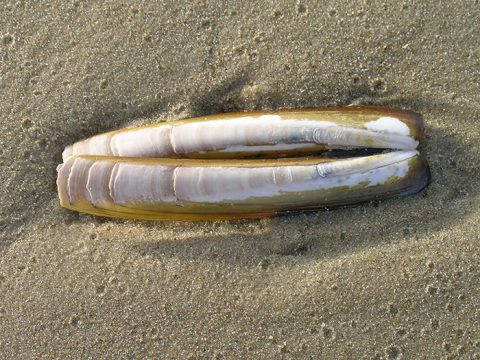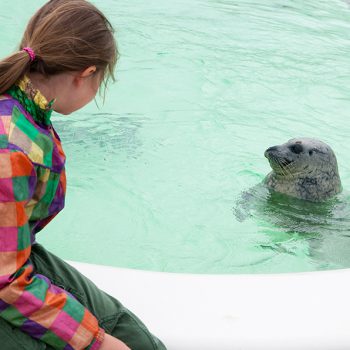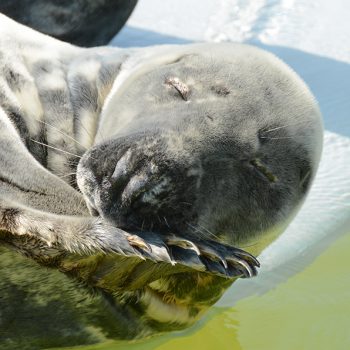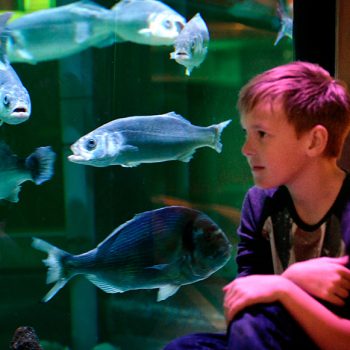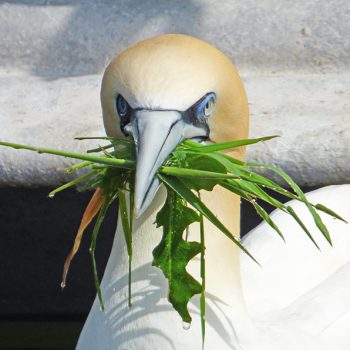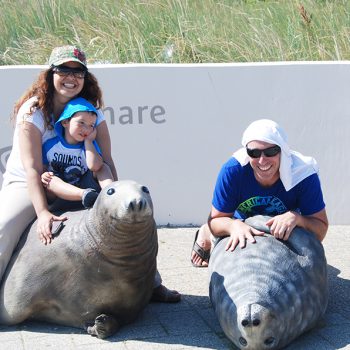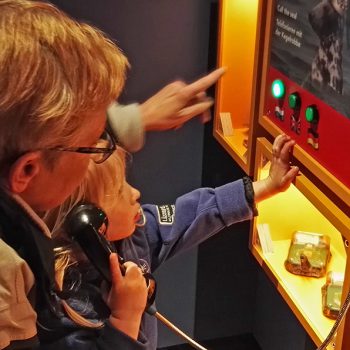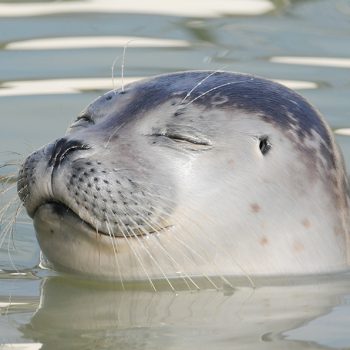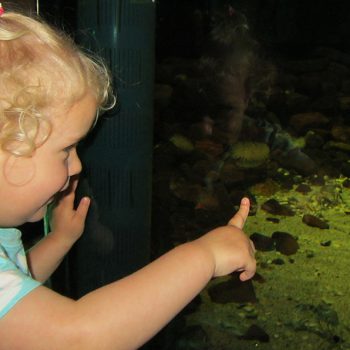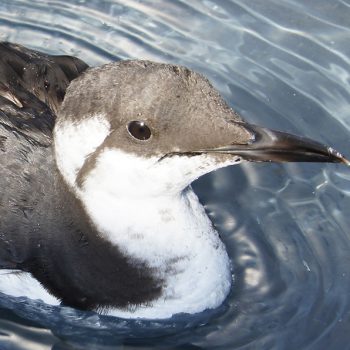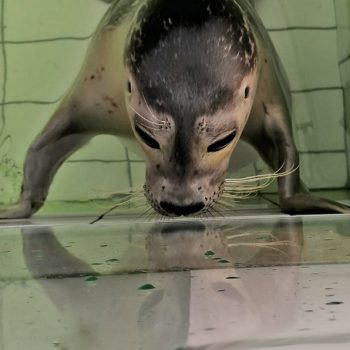Pacific oysters have become very common in the Wadden Sea, Oosterschelde and Grevelingen. Although they are very tasty, not everyone is happy with the presence of this oyster. You can easily cut yourself on these razor-sharp shells. And there are places where they grow in such great numbers, they drive away other shellfish. Other benthic animals use these oysters as a safe hideaway and a sturdy underground. Although many birds have difficulties opening up their shells, there a number of bird species learning to conquer them.
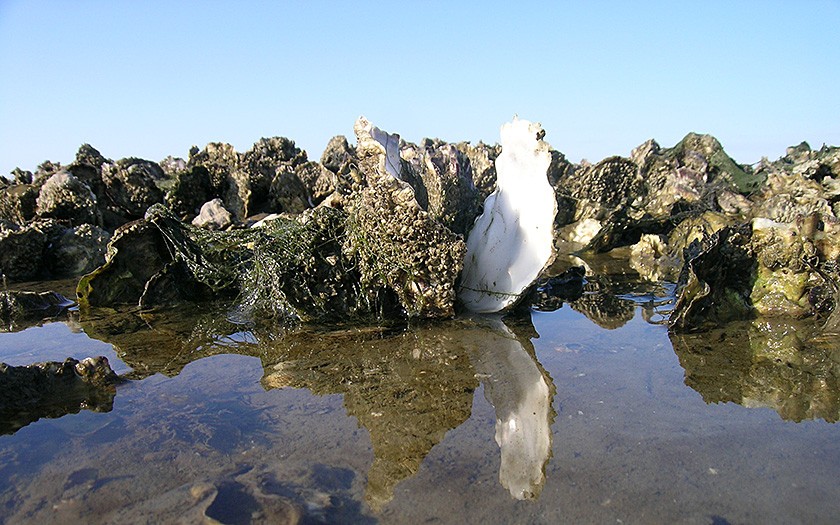
Oysters for restaurant and fish market
The Pacific oyster has been farmed on a large scale in the Oosterschelde since the 1960s. It is known on the Dutch market under the name ‘creuse’.
The oysters are very suitable for aquaculture. They start reproducing at age 1 and grow very rapidly. Within two years, the creuse weighs 100 grams (excluding shell) and is suitable for consumption. A flat oyster takes much longer to reach this weight; at age four, it still only weighs 75 grams.
Distribution and habitat of Pacific oysters
The Pacific oyster originally came from the Asian Pacific coast. It was imported by man and is now found in North America, Australia, Europe and New Zealand. The first Pacific oysters were imported to the Netherlands from Portugal in 1883; the reason was to see whether or not they were suitable for cultivation. Since the 1960s, Pacific oysters have been imported to Zeeland in large amounts. The Dutch flat oyster had suffered greatly from a disease and the fishermen hoped the Pacific oyster would be resistant. They didn’t expect this species capable of reproducing in the cold Dutch waters, so there would be no danger in bringing this exotic animal to the Netherlands. Unfortunately, cold water did not hinder them; in the mid 1970s, the oysters had reproduced in massive numbers.
Pacific oysters were imported to the Wadden Sea in 1983. Presently, you find them both in the Wadden Sea and delta region, where the population is still growing. The oysters need a hard underground to grow on, but it doesn’t have to be very large. An empty oyster shell is a good base for a new oyster reef. You find the largest reefs on sandbanks and dikes that are exposed during low tide, but you also find them growing down to depths of 80 meters.
New reefs made from oysters
The Japanese oysters are present in massive numbers in the Oosterschelde, and they keep growing in population in the wadden region. They eat lots of algae, take up lots of space and will also eat larvae from other shellfish. Biologists are concerned that other shellfish, such as cockles and mussels, will be serious affected by this competition. In turn, shellfish-feeding birds, such as eiders and oystercatchers, could run into major problems.
However, oyster reefs also form a kind of rocky bottom for many marine animals, such as sea anemones, barnacles and small fish that would otherwise have no suitable home in the world of sand and mud. Mussel banks used to serve this purpose, but they are less stable than oyster reefs. In addition, they have also become rarer due to shellfish fisheries.
The oyster banks solve part of the mussel problem, since older oyster reefs make suitable underground for mussels. You see mixed shellfish banks forming in many areas.
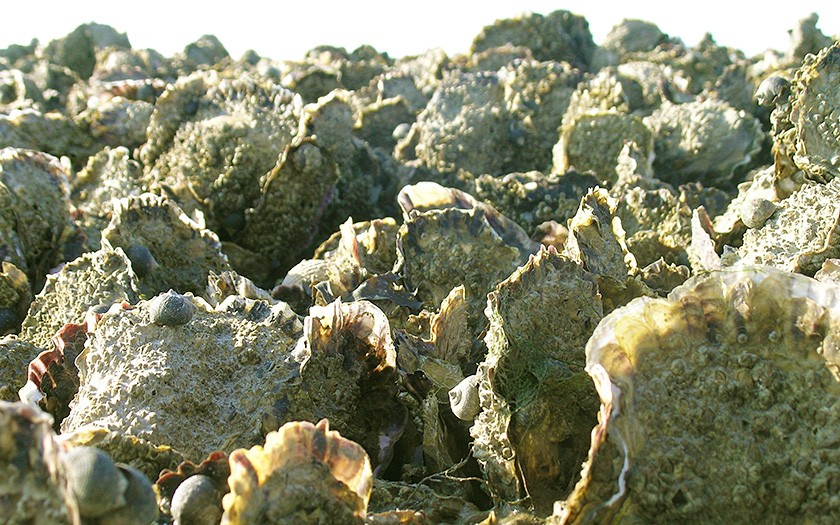
Birds and oysters
It is not easy for a bird to crack open a Pacific oyster. Especially when they are clumped together or fastened to a stone or dike. However in 2007, scientists witnessed oystercatchers and herring gulls on Texel figuring out how to crack open these difficult prey. Oystercatchers stick their bills into slightly opened oysters. If this works, then they can pry it further open and eat the meat.
Gulls have found a more rigorous method. Single oysters are picked up with their beaks and dropped from heights onto the dikes, where they crack open. At first, the gulls were not very successful (30%). In the meantime, they have become handier whereby 90% of the attempts result in open oysters. Should you attempt to bike along the Wadden Sea dike, you will see just how successful they have become. But watch out for flat tires!
Oysters on Texel
The Pacific oyster was found on Texel in small amounts in the 1970s. Since the end of the 1990s, they became numerous on the mud flats surrounding Texel. An oyster reef even developed in the Mok Bay. There are people that harvest Pacific oysters in small amounts. You will often find oysters on menus in various restaurants on the island.
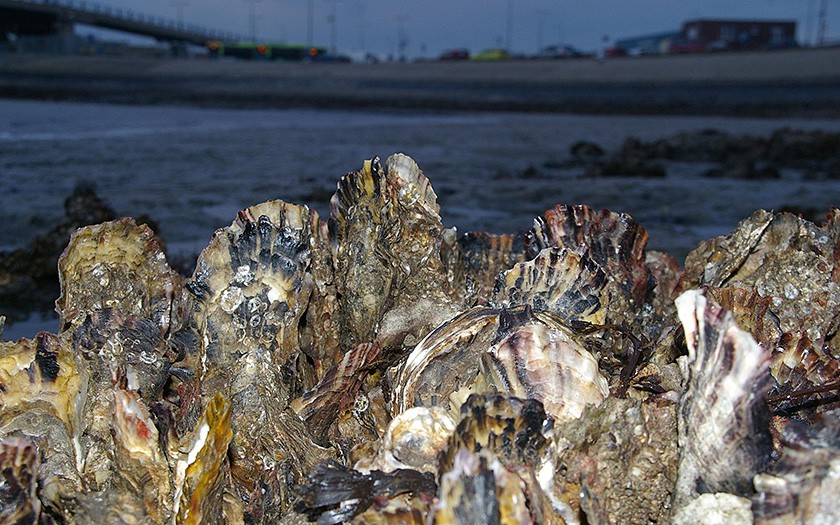
Facts about Pacific oysters
- size:
up to 20 centimeter, sometimes much larger
- color:
white to gray
- food:
phytoplankton
- enemies:
people, disease and since recently, gulls and oystercatchers
- reproduction:
sexual
Names
- Dut: Japanse oester (creuse, wilde kreuse)
- Lat: Crassostrea gigas
- Eng: Pacific oyster (Portugese oyster)
- Ger: Pazifische Auster (Felsenauster)
- Dan: see Latin (Øster)
